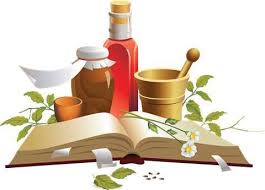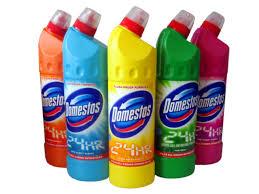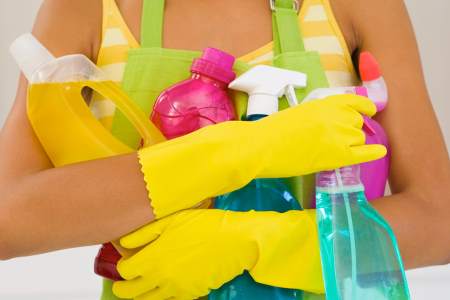If such a “tomato” opus happened to you, then be prepared for a battle with corrosive consequences. The fact is that tomato juice is a natural dye. In severe cases, only strong remedies will help. Be patient, brush and start cleaning until the juice has done its insidious work.
General rules for deriving consequences

Of all vegetable juices, tomato juice is considered the most difficult to excrete. If you bought a package of reconstituted juice, then it will be easier to deal with stains, but you will have to try harder with freshly squeezed juice. The success of the wash also depends on the naturalness of the juice and the fruit/water ratio (for reconstituted juice).
Remember the first rule: don't let the juice dry out, because old stains are harder to remove and there is a great chance of failure. If you just spilled the juice, quickly blot up the excess until it has soaked deep into the structure. For these purposes, a napkin or paper towel is suitable. Blot marks gently, do not rub or smudge. It is worth cleaning off the excess from the edge to the middle, so as not to increase the harm inadvertently caused.
It is worth exposing a thing to cleaning agents only locally.There is no need to soak the entire garment in the product if you planted a small stain. The only exception is that the packaging of the cleaning composition indicates that things must be soaked completely, which is extremely rare.
Please note that it is not worth specifically prolonging the chemical effect on the fabric. Thin and delicate materials from prolonged use of strong chemicals can deteriorate or acquire bald spots - the chemistry will corrode the material. From the inside, it is advisable to lay a paper napkin or a soft white cloth. As it impregnates, replace it with a new one in order to quickly eliminate the coloring pigment.
Folk ways

If the condition is not critical and a fresh spot of small size, then improvised means and folk methods will help you.
Boiling water
This method is suitable for cotton items and non-fading dense fabrics. Remove with boiling water only fresh stains, for the old will have to pick up more effective measures. Before treatment, do not use soap or powder for cleaning, otherwise the effect will be weak. You will need 3-4 liters of boiling water. Pour boiling water in a thin stream directly onto the stain, avoiding clean areas. The tomato trail will fade quickly. After that, you can proceed with the usual washing.
Ammonia
Soak a cotton swab or sponge in ammonia (ammonia) and treat the contaminated surface from the edge to the center.If the stain is large, lay down a paper towel. After a minute, the tomato marks fade and disappear. After the procedure, it is advisable to send clothes to the machine, observing a gentle temperature regime.
Domestos

Applying a chlorine-containing composition is the lot of desperate and risky housewives. The composition is suitable for cotton, synthetics, jersey, silk is contraindicated.The main danger is that you can get a white spot instead of a tomato one. Therefore, stability testing is required. Dilute the composition with water in a ratio of 1 to 2. If the fabric is white, you can increase the concentration of the product, if dark, it should be reduced. Soak a cotton wool or sponge in the resulting mixture and treat the dirt. The tool will instantly lighten the natural dye. Prolonged exposure to the material threatens the appearance of holes and bald spots, act as quickly as possible. After cleaning, send the item to the washing machine.
Hydrogen peroxide
Another multifunctional tool in the fight for cleanliness is peroxide. It is this solvent that does an excellent job with vegetable and fruit juices on white things. Soak a cotton swab in peroxide and apply to the stain, periodically checking the condition. In severe cases, you will have to gently rub. Rinse in cool water.
Glycerin and egg yolk
Pharmaceutical glycerin and fresh yolk will help eliminate traces of tomato juice on colored clothes. Move the components in equal proportions. Apply the composition to the fabric and leave for 10 minutes. It is important that the mixture remains liquid and does not dry out.. If the effect is weak, repeat the procedure again. Rinse off the residue with warm water, then rinse in cold water and proceed to washing with a delicate detergent at a gentle temperature.
Lemon juice and ethyl alcohol
An unusual blow will help to remove tomato juice from clothes. Mix lemon juice / citric acid with ethyl alcohol in a ratio of 1 to 5. Heat the mixture in a water bath to 40 ° C and apply to the stain. Leave on for 5 minutes, rinse with plenty of cool water, machine wash.Lemon juice is quite caustic, so it is also suitable if necessary. clean grass from jeans Soak them in a solution of citric acid before washing. Rubbing alcohol is an effective method if necessary remove chocolate stain.
table vinegar
This method is suitable for weak and relatively fresh stains. Mix white vinegar with cool water in a ratio of 1 to 2. Apply the product to the contaminated area, leave for a couple of minutes. Rinse thoroughly under running water, repeat if necessary. This is followed by a regular machine wash with a mild detergent and at a low temperature. A thick paste of ordinary vinegar and salt will help remove rust stains from clothes.
Specialized Chemistry

From professional means you will be helped by:
- liquid or powder stain remover;
- soap for removing stains (preferably after pre-treatment with another solvent composition);
- bleaching laundry detergent (only for white).
Before using funds, check the label on the clothes. Delicate and delicate fabrics will not withstand exposure to chlorine-containing products. It is also important to observe the temperature regime recommended by the manufacturer. Do not expose the whole product to the composition, for most cases local cleaning will do. When using strong compounds, do not forget to wear rubber gloves and ventilate the room. After cleaning, rinse the fabric thoroughly and proceed to a standard machine wash.
Verdict
If an expensive item or a product marked “dry cleaning only” or “washing is prohibited” (an icon with a crossed-out container of water) has been damaged by tomato juice, go to a dry cleaner. It is worth resorting to home methods only with confidence in the result or the realization that the thing can be irrevocably spoiled.
If strong specialized chemistry is powerless, then it is unlikely that something will have a positive effect on the stain.
